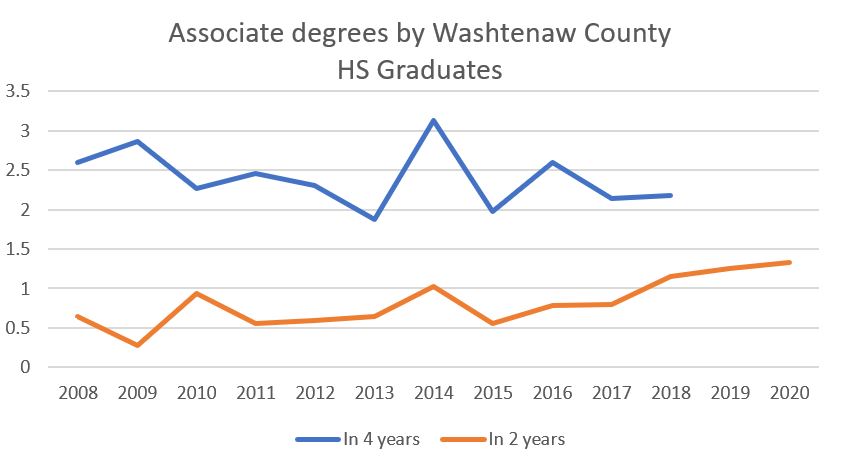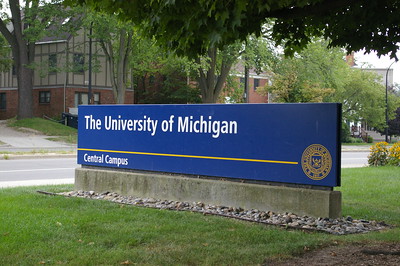Last month, the WCC Board of Trustees handed the students a 4% tuition increase. At the same time, the taxpayers of Washtenaw County handed WCC a nearly 10% increase in property tax collections. So, one might ask why – when the county tax revenues have risen by nearly $7M in a single year – WCC also feels the need to raise in-district student tuition at all? It seems that someone needs to fund WCC’s capital costs.
Prior to the pandemic, the Administration developed a list of capital projects around the campus. They included the rehabilitation of the Morris Lawrence Building, an extensive capital refresh of the Student Center Building, and the construction of the “Advanced Transportation Center.”
At the time, the Administration swore that the projects would require a $10 per credit hour “facilities fee.” The “facilities fee” didn’t come to pass, but the $5-per-credit hour “technology infrastructure fee” and the $4 in-district and $5 out-of-district tuition increases have managed to gouge out additional funding from the students.
The Administration has never successfully answered the question of why the students should have to pay for capital improvements to the campus. Community colleges in Michigan have a mechanism by which they can seek voter approval for a special tax to pay for capital improvements to the campus. Washtenaw County voters rarely turn down a special tax request. Asking the voters to invest in the long-term health of the campus makes a lot of sense. Expecting a dwindling number of students to shoulder the cost of millions of dollars in capital costs does not.
WCC’s Administration does nothing to contain capital costs
As the ML Building demonstrated, a significant percentage of the cost of the proposed capital projects represents long term building maintenance neglect. Ninety percent of the $13.5M ML Building project cost was attributed to neglected maintenance. The Student Center Building also has an enormous maintenance debt. And as the Sewage Follies demonstrated, other critical infrastructure apparently isn’t being addressed either. Students should not have to finance the failures of the Administration to maintain the campus infrastructure.
In a recent article in the Washtenaw Voice, WCC President Rose Bellanca was quoted as saying that she believes that WCC’s enrollment is declining because four year universities in the area are zeroing out tuition for low-income households.
That’s highly unlikely. In fact, it borders on the absurd. The chart below uses 2-year and 4-year completion data from the State of Michigan for Washtenaw County high school graduates between 2008 and 2020. It shows the percentage of Washtenaw County high school graduates who earned an associate degree in two years and four years after following graduation.

While the number of students who earned an associate degree in four years varies, the number of students who earned an associate degree in two years trends upward. This upward trend – especially from 2018 forward – is important. In 2018, the University of Michigan introduced the Go Blue Guarantee. This program provides full-ride tuition grants to students from households with an income of $65,000 or less. According to the State of Michigan data, the Go Blue Guarantee didn’t negatively affect the number of two year degrees Washtenaw County high school graduates earned. In fact, the percentage of high school graduates who earned associate degrees in two years went up after Michigan introduced the Go Blue Guarantee.
Guarantee programs aren’t decreasing enrollment
It’s also notable that the median household income in Washtenaw County in 2022 was nearly $80,000. Most students from Washtenaw County wouldn’t qualify for the Go Blue Guarantee or any other zero-tuition plan in the area. Third, virtually all students from low-income households in Washtenaw County would qualify for Pell Grants, which would cover most or all the cost of attendance at WCC. If these students wanted to attend WCC, they could likely do so at no cost. Finally, the number of Pell-eligible students in Washtenaw County has declined for years.
In other words, the universities’ “guarantee programs” aren’t causing WCC’s enrollment declines. Rather, the enrollment is declining at WCC because a two-year degree will not produce a living-wage income, and WCC has done nothing to improve its competitive position.
Further, if students in Washtenaw County are so inhibited by the cost of post-secondary education that they are being spirited away by university guarantee programs, why is the WCC Administration larding its capital costs onto its students when the taxpayers here have demonstrated again and again that they will willingly fund WCC’s capital requests?
Despite Trustee DeVarti’s protests to the contrary, the WCC administration and its Board of Trustees are exercising a tired Republican strategy of raising the cost of post-secondary education to ensure that those living on the margins remain there.
Photo Credit: mei-wen sun , via Flickr



















